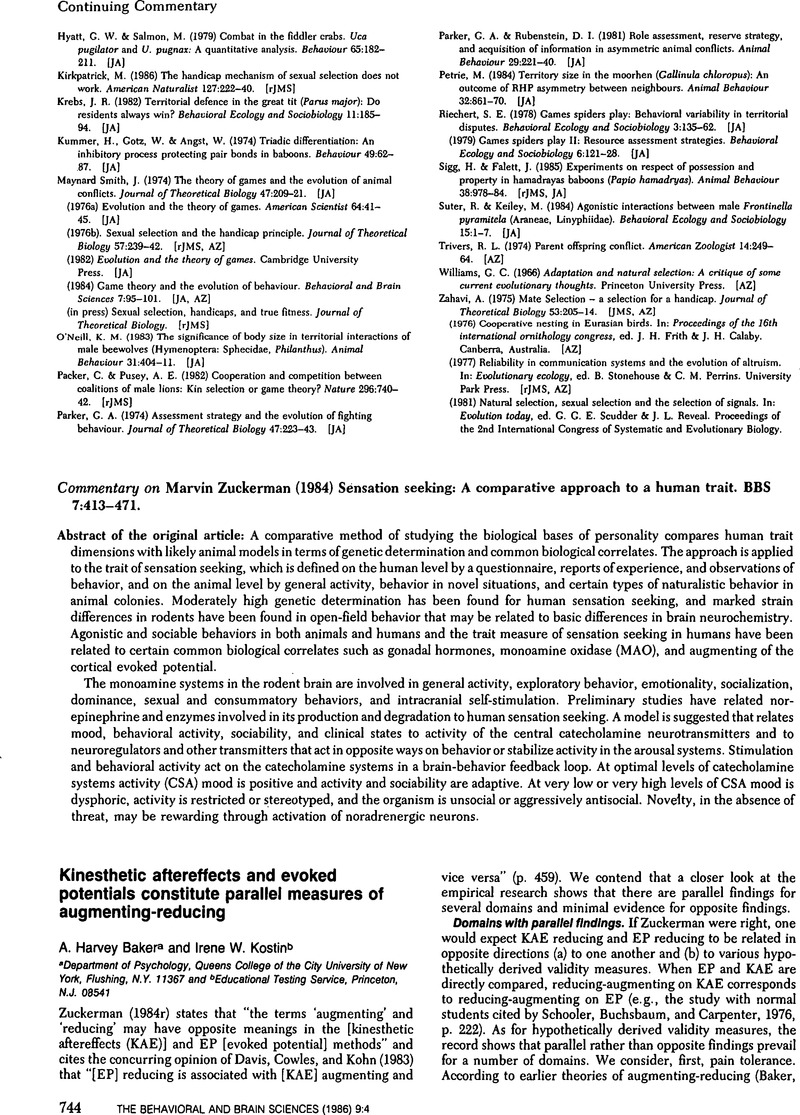Crossref Citations
This article has been cited by the following publications. This list is generated based on data provided by Crossref.
Zuckerman, Marvin
1990.
The Psychophysiology of Sensation Seeking.
Journal of Personality,
Vol. 58,
Issue. 1,
p.
313.
Paige, Stephen R.
Reid, Graham M.
Gwyn Allen, Mary
and
Newton, Joseph E.O.
1990.
Psychophysiological correlates of posttraumatic stress disorder in Vietnam veterans.
Biological Psychiatry,
Vol. 27,
Issue. 4,
p.
419.
Carrillo-de-la-Peña, M.T.
1992.
ERP augmenting/reducing and sensation seking: a critical review.
International Journal of Psychophysiology,
Vol. 12,
Issue. 3,
p.
211.
Carrillo-de-la-Peña, M.T.
and
Barratt, E.S.
1993.
Impulsivity and ERP augmenting/reducing.
Personality and Individual Differences,
Vol. 15,
Issue. 1,
p.
25.
Ferrando I Piera, Pere J.
Colet, Andreu Vigil I
Pallarés, Jordi Tous I
and
Seva, Urbano Lorenzo I
1993.
Spanish adaptation of the reducer-augmenter scale: Relations with EPI-A scales.
Personality and Individual Differences,
Vol. 14,
Issue. 4,
p.
513.
Kline, John P.
Schwartz, Gary E.
Fitzpatrick, Denis F.
and
Hendricks, Shelton E.
1993.
Defensiveness, anxiety and the amplitude/intensity function of auditory-evoked potentials.
International Journal of Psychophysiology,
Vol. 15,
Issue. 1,
p.
7.
Brebner, John
and
Stough, Con
1995.
International Handbook of Personality and Intelligence.
p.
321.



